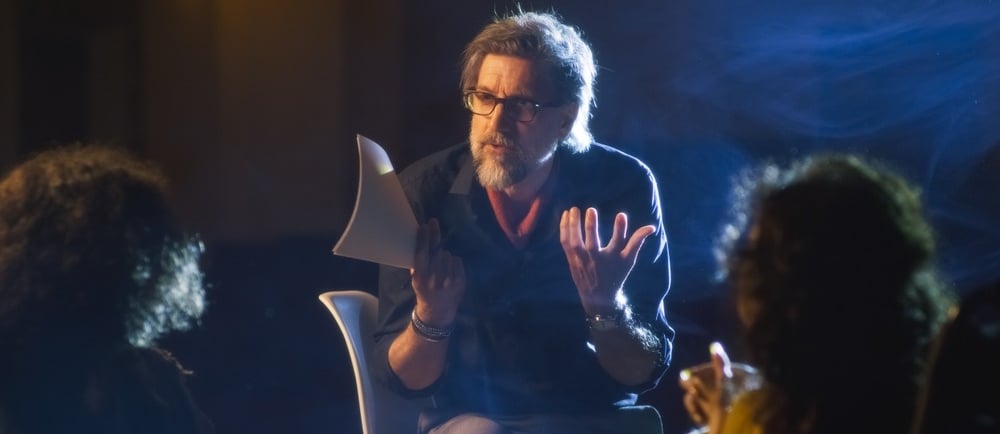Theatre Table Work Questions and Strategies
Make your rehearsals stronger with these essential theatre table work questions and Strategies. Learn how to guide student actors through character objectives, motivation, and relationship dynamics to build deeper, more connected performances.
THEATRE DIRECTOR RESOURCES
Katie Zakkak
9/22/20253 min read



Total honesty - when I’m directing, I still get the itch to skip ahead, jump right into blocking, set the stage, make the magic happen. But the more experience I’ve gained, the more I’ve realized this truth: when I take the time to do thorough table work, the entire rehearsal process runs smoother, clearer, and more collaboratively.
Table work isn’t just a box to check. It’s the essential groundwork for building compelling characters, truthful relationships, and a strong ensemble. Here’s how I approach it, the questions I use to guide my cast, and how I schedule table work rehearsals for maximum impact.
Start with the Basics: Objective, Motivation, and Tactics
Before any stage movement happens, we need to know: what do these characters want, and why?
That’s where we begin.
I usually assign this work as homework for the actors—something they can reflect on privately and then bring back to the group. These are the foundational questions I have them answer:
Objective: What does your character want in this scene?
Motivation: Why do they want it? What’s at stake?
Tactics: What are they doing to try and get it?
📝 I include a printable worksheet for this in my Free Drama Teacher Toolkit that you can easily use with your own cast.
Once we’re back together, we go around and share aloud. This does a few important things:
It builds a shared understanding of the story
It opens up collaboration between actors
It gives the director (that’s you!) a chance to shape the vision and clarify misunderstandings
Ask Deeper Table Work Questions
Once the basics are down, it’s time to go deeper. I love using this phase of table work to explore relationships, secrets, stakes, and inner life. Here are a few of my favorite go-to questions for actors:
What do you want from the other character in this scene?
What are you afraid of losing?
What happened just before this moment, emotionally?
How does your relationship change throughout the scene?
What’s a secret your character is hiding?
What’s something your character isn’t saying out loud?
What does your character think they want—and what do they really want?
These questions help actors go beyond line-reading and into real, motivated choices. They also help build empathy and deeper ensemble work.
How I Schedule Table Reads
Yes, we always start with a full-cast read-through—but that’s not where table work ends. After that, I break things up based on character groupings and important relationships instead of just working through the script chronologically.
Here’s how that might look:
Example from Little Women:
Scene work with Jo and Laurie
Scene work with Marmee and the sisters
Scene work with Aunt March and Jo
Scene work with the sisters alone
This way, I’m not calling actors to sit through scenes they’re not in. We get to focus on just the key relationships at a time, and the cast uses their time more effectively. Plus, it keeps everyone engaged, and the table work stays productive and energized.
Why Table Work Matters
Sometimes table work doesn’t feel like “rehearsal.” You’re sitting. You’re talking. You’re not moving. But this is where some of the most creative and connected work happens.
It’s the moment your cast goes from reading lines to living inside the story.
It’s also the moment the play stops being something in your imagination and starts becoming a shared vision between you and your actors.
Looking for More Support?
🎭 Check out my Audition & Rehearsal Resources Bundle on TPT for helpful planning materials, character worksheets, and more.
📥 Grab my Free Drama Teacher Toolkit here, including my Character Analysis Worksheet and more rehearsal-ready tools.
Happy directing—and break a leg!
